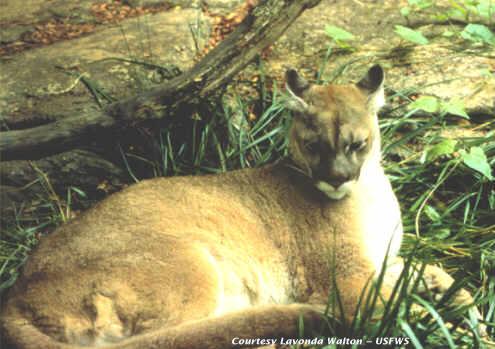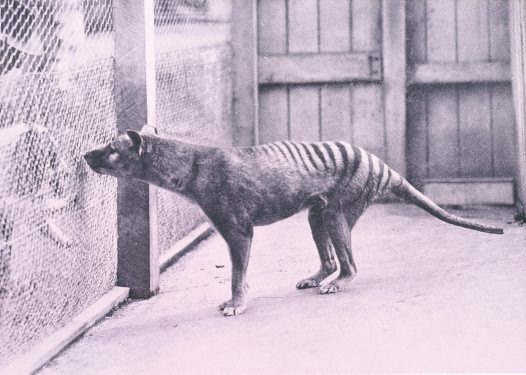The US Fish and Wildlife Service announced this month1 that the Eastern Cougar, also known as the Ghost Cat, is officially extinct.

The Eastern Cougar, in an archival photo from the USFWS
The animal has probably been extinct for at least 70 years, but there have been a scattering of alleged sightings for decades that kept alive the idea that there might be a few of the big cats still surviving in wilderness areas of Pennsylvania and New York. After investigating many claims and reviewing the available data on others, the feds have finally decided that the Ghost Cat is now just that, one more of nature’s ghosts.
Extinctions are hardly rare these days. In 1993 Harvard biologist E.O. Wilson2 estimated that roughly three species per hour are currently going extinct, about 30,000 a year, a number supported by prominent biologists such as Niles Eldrige3 and Daniel Simberloff4. Many of these species are microorganisms, others are plants or insects so small or so limited in their range that most of us would never have glimpsed them in our lifetimes. Others, like the Ivory-Billed Woodpecker or the Bali Tiger were large and spectacular creatures that we might have hoped to see at least once.

Sharland Collection, Hobart Zoo 1930’S
The last captive thylacine, or Tasmanian Tiger, died in a zoo in Hobart, Tasmania, in 1936. This is an animal that has fascinated me since I was a child. When I was very small I owned a book about animals that had been written in the 1920’s and re-released year after year without being substantially updated: the Tasmanian Tiger appeared in the section on Australian animals, alongside the Tasminian Devil, the Kangaroo, the Wallaby, and the Wombat. The thylacine, despite its remarkable resemblance to a dog or fox, was actually a marsupial, like the other Australian creatures in my book, more closely related to koalas and opossums than to dogs or cats. What the book didn’t tell me was that the animal, already rare due to disease and habitat loss, had been the victim of a bounty system in its native territories, a program designed to eradicate it entirely. The last Tasmanian Tiger killed in the wild was shot by a farmer in 1930; in 1933 (the year the movie King Kong appeared in theaters, with all its marvelous — extinct — animals) another thylacine was captured and sent to the zoo in the Tasmanian capital, where it survived for three years. There has never been another confirmed sighting.
Unlike many extinct animals, however, the thylacine survived far enough into the modern age to be recorded on film:
I’m savvy enough about the realities of the natural world to understand that extinction is an essential part of the wider processes of evolution and adaptation: organisms that are poorly-equipped for survival, or who have failed to keep up with changes in their environment, die out to make way for new candidates, who will, in their turn, either adapt or die. Still, there are so many creatures I would like to have seen: the giant sloth, the moa, the “terror birds” of South America5; all great beasts whose time had come, too large, too conspicuous, to survive in a world dominated by a hungry primate who could turn fire to his own uses and make rocks and sticks and pieces of fiber into tools that made the fiercest teeth and claws ineffectual.
Because of the thylacine and its sad story, I think I pay more attention to the creatures around me now. For all I know the moth that just landed on the back of my chair is the last of its kind — or the first, a new species, beginning a new cycle. Given the opportunity, nature always fills the available slots, changing existing creatures, using the raw material of adaptation and selection to create new ones, a process that is going on all around me.
Chances are I’ll never see an Ivory-Billed Woodpecker, even though my next-door neighbor has a picture of one on her car’s license plate. But who knows what other marvels are brewing? I’ll keep my eyes open.
* * *

Wow! Very interesting! I learned a whole lot of stuff I didn’t know!